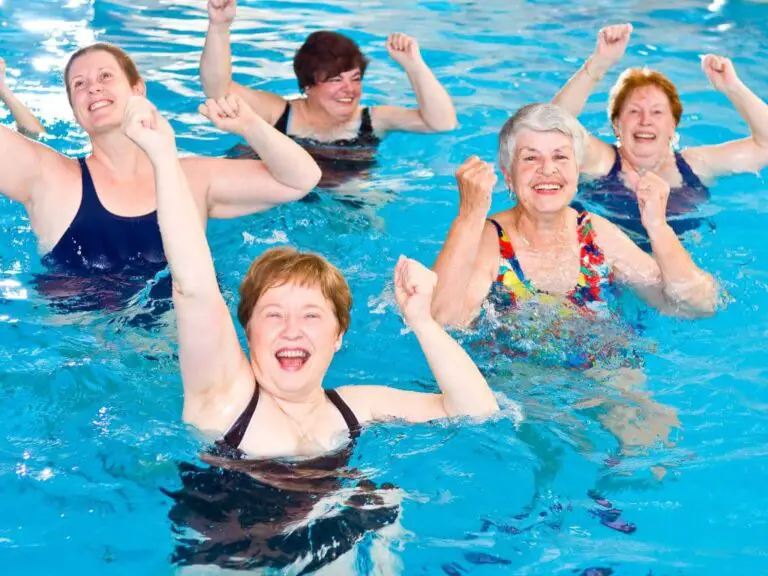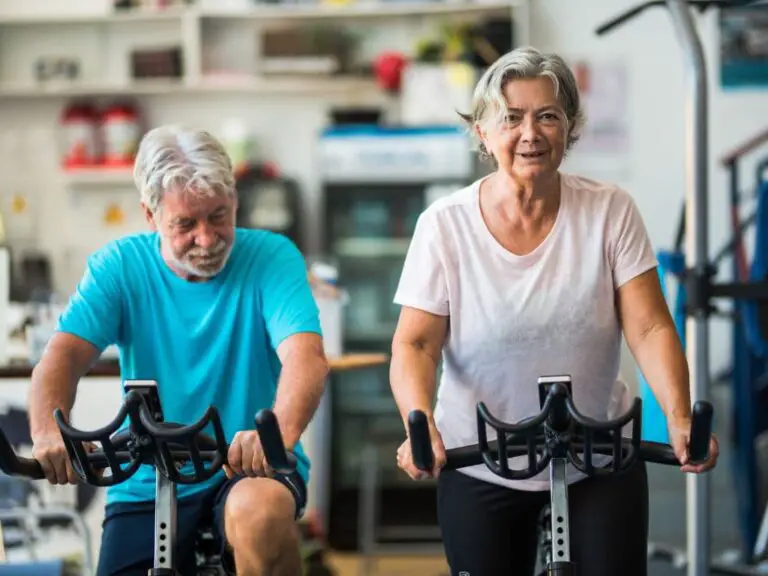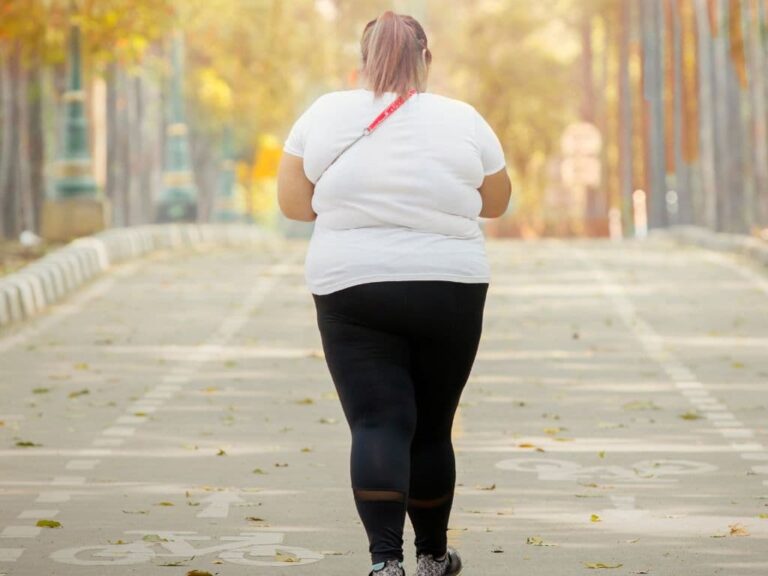How Many Calories Should a 65-Year-Old Woman Eat to Lose Weight?
Are you a 65-year-old woman trying to lose weight but confused about how many calories you should consume? Worry no more, I am here to help.
A 65-year-old woman who wants to lose weight should consume between 1,200 and 1,500 calories per day. However, this amount may vary depending on your weight, height, and activity level. It’s always best to consult with your healthcare provider. You can also refer to a registered dietitian to determine your appropriate caloric intake.

In the rest of the blog, I’ll explore how many calories a 65-year-old woman should eat to lose weight. I’ll also provide tips on how to achieve your weight loss goals.
Ideal Calories a 65-Year-Old Woman Eat To Lose Weight
As you age, your metabolism slows down, and your calorie needs to decrease. Thus, it is important to adjust our calorie intake accordingly to maintain a healthy weight. The number of calories a 65-year-old woman should eat to lose weight depends on several factors. This includes:
- Weight
- Height
- Activity level
- Overall health status
A general guideline for older adults is to aim for a calorie intake of 1,200 to 1,500 calories per day for weight loss. However, this may vary depending on individual needs. Before starting any weight loss program, you should discuss this with a healthcare professional.
It is also important to note that weight loss should be gradual and sustainable. You can start with a goal of losing 1-2 pounds per week. Rapid weight loss can be harmful to your health and may result in loss of muscle mass instead of fat.
Besides, there are several essential factors that affect calorie needs. Here are a few of them:
1. Basal Metabolic Rate (BMR)
This refers to the number of calories your body burns at rest. Your BMR depends on your age, gender, height, and weight.
2. Physical Activity
The more active you are, the more calories you’ll burn.
3. Body Composition
Muscle burns more calories than fat, so you’ll burn more calories even at rest if you have more muscle mass.
4. Hormonal Changes
As you age, hormonal changes can affect your metabolism, making it more difficult to lose weight.
How to Calculate Your Daily Calorie Needs
You need to know your BMR and activity level to calculate your daily calorie needs. There are many online calculators available that can help you estimate your BMR. Once you have your BMR, you can calculate your daily calorie needs based on the following activity levels.
1. Sedentary
If you have a desk job and don’t exercise regularly, multiply your BMR by 1.2.
2. Lightly Active
If you do light exercise 1-3 days per week, multiply your BMR by 1.375.
3. Moderately Active
If you exercise moderately 3-5 days per week, multiply your BMR by 1.55.
4. Very Active
If you exercise intensely 6-7 days per week, multiply your BMR by 1.725.
5. Extremely Active
If you have a physically demanding job or are a professional athlete, multiply your BMR by 1.9.
For example, if your BMR is 1300 calories, and you’re moderately active, your daily calorie needs would be 2015 calories (1300 x 1.55).
How Many Calories Should You Consume to Lose Weight?
Now that you know your daily calorie needs, you can calculate how many calories you need to consume to lose weight.
To lose one pound of fat, you need to create a calorie deficit of 3500 calories. So if you want to lose one pound per week, you need to create a calorie deficit of 500 calories per day (500 x 7 = 3500).
The American Heart Association recommends a safe and healthy rate of weight loss is one to two pounds per week. So if you’re looking to lose weight, aim to create a calorie deficit of 500-1000 calories per day.
For example, if your daily calorie needs are 2000 calories, you should aim to consume 1500-2000 calories per day to create a calorie deficit of 500-1000 calories.
Tips for Losing Weight Safely
1. Eat a Balanced Diet
Make sure to include plenty of fruits, vegetables, whole grains, lean protein, and healthy fats in your diet.
2. Keep Track of Your Calorie Intake
It is important to keep track of the calories you consume to ensure you are in a calorie deficit. But consuming only a few calories as this can be harmful to your health. Various apps and online calculators can help you determine your daily calorie needs.
3. Stay Hydrated
Drinking plenty of water is essential for weight loss as it can help reduce appetite and boost metabolism. Aim to drink at least 8-10 glasses of water per day.
4. Exercise Regularly
Engaging in regular physical activity can help you burn calories. It increases muscle mass, which boosts your metabolism. It is recommended that older adults engage in at least 150 minutes of moderate-intensity aerobic exercise per week. You can pair this with strength training exercises at least twice weekly.
5. Get Enough Sleep
Lack of sleep can disrupt your hormones, leading to increased appetite and cravings. Aim to get 7-9 hours of sleep per night to promote weight loss and overall health.
6. Reduce Stress
Stress can lead to overeating and unhealthy food choices. It is important to manage stress levels through relaxation techniques. You can go for yoga, meditation, or deep breathing exercises.
Final Thoughts
As you get older, shedding those extra pounds can become a daunting task. If you’re a 65-year-old woman trying to shed some weight, it’s recommended that you aim to consume around 1,200 to 1,500 calories per day. This can help you maintain a healthy diet and reach your weight loss goals.
Keep in mind that this recommendation may vary depending on your specific health needs, so it’s always a good idea to consult with your doctor or a registered dietitian for personalized advice.
Nonetheless, incorporating minor lifestyle alterations such as consuming a well-balanced diet, drinking sufficient water, engaging in regular exercise, ensuring adequate sleep, and minimizing stress can aid in achieving weight loss objectives safely and efficiently. With persistence, commitment, and a favorable outlook, achieving a healthy weight is attainable at any age.
Frequently Asked Questions
-
How many calories should a 65 year old woman eat to lose weight?
After age 60, you need 400-500 calories less. For moderately active people, around 2000 calories per day are acceptable. You will need to reduce your intake to 1,800 calories after 50.
-
Can you lose weight doing chair exercises?
Chair exercises can be done from the office, at home, or in class. They are low-impact and easy to add movement to your daily routine. A 32-minute session can help you burn between 120 and 250 calories. If you add weights or resistance bands, the number of calories burned will go up even further.
-
Can 7 minutes of exercise a day make a difference?
You can feel your heart beat racing within seven minutes. It targets all major muscles groups. This can be used to increase your strength, endurance, and muscle power to help you improve your health. To get the most out of the workout, repeat it several times.
-
Will 3 pound weights tone my arms?
Start with dumbbells between 2 and 3 pounds to tone your arms. Then, move up to dumbbells that weigh 5- to 10 pounds for women or 10- to 20 pounds for men. You can perform 12-15 repetitions without much effort once you are able to do them consistently.
-
How many hours sleep does a 70 year old need?
Ageing and Sleep Older adults require approximately the same sleep hours as adults, 7 to 9 hours per night.
-
What is the best exercise for over 70s?
Walking or running into your 70s: This is probably the most simple and accessible activity you can do. You just need to put on your tennis shoes, and get out there. The Arthritis Foundation states that walking has many health benefits, such as improved circulation.
-
How do I lose thigh fat while sitting?
Slowly lift your leg forward from the chair. Keep your knees bent and your hips at an angle of 90 degrees to your body. Next, lift your right leg about an inch (2.5 cm). Repeat this 10 times. Next, lower your leg and repeat the process on the opposite side.
-
Why do old people lose weight?
Lean body mass, such as muscle and bone density, decreases with age. Our lean mass begins to decline by about half a pound every year as early as age 30. It is possible to not see a difference when you get on the scale because most of the weight loss you have made has been replaced with fat.
-
Are sit workouts effective?
The pros: HICT can be very safe and effective. It also offers realistic options for those who are limited on time. Because body weight can be used to resist, people are able to do the exercises anywhere and anytime without having access or need for specialized equipment.
-
How often should you do the 7 minute workout?
The Scientific 7-Minute Workout should be completed at least once a day. This science-based workout will help improve your core health and cardiovascular fitness. It is important to combine your workout with a healthy diet.
-
Will my belly overhang go away?
An apron stomach cannot be treated. The only ways to reduce one are through overall weight reduction and surgical/non-surgical options.
-
How can I lose belly fat while sitting?
Crunches while sitting You can sit straight up on the chair, but don’t rest your head against the backrest. Place your feet together and rest your fingers between your ears.
-
How many hours should I sit a day?
You can still have health issues such as metabolic syndrome, even if you sit a lot and exercise. According to the latest research, you require 6075 minutes of moderate intensity activity per day in order to avoid falling prey to excessive sitting.
-
Does moving legs while sitting burn calories?
While sitting at your computer, move your legs and tap your feet. On a long phone call? Keep moving and get up. Davis states that if you keep moving, it will take less than an hour to burn 100 calories.
-
Are seated workouts effective?
You can stay active by sitting down, with just a chair. Chair exercises that are low-impact can increase your movement and reduce pressure on your joints.







